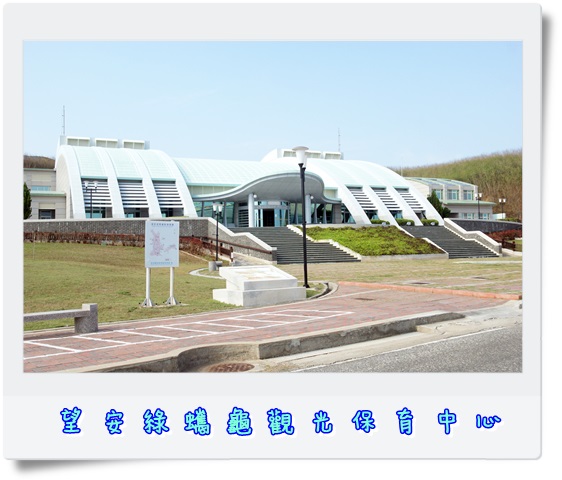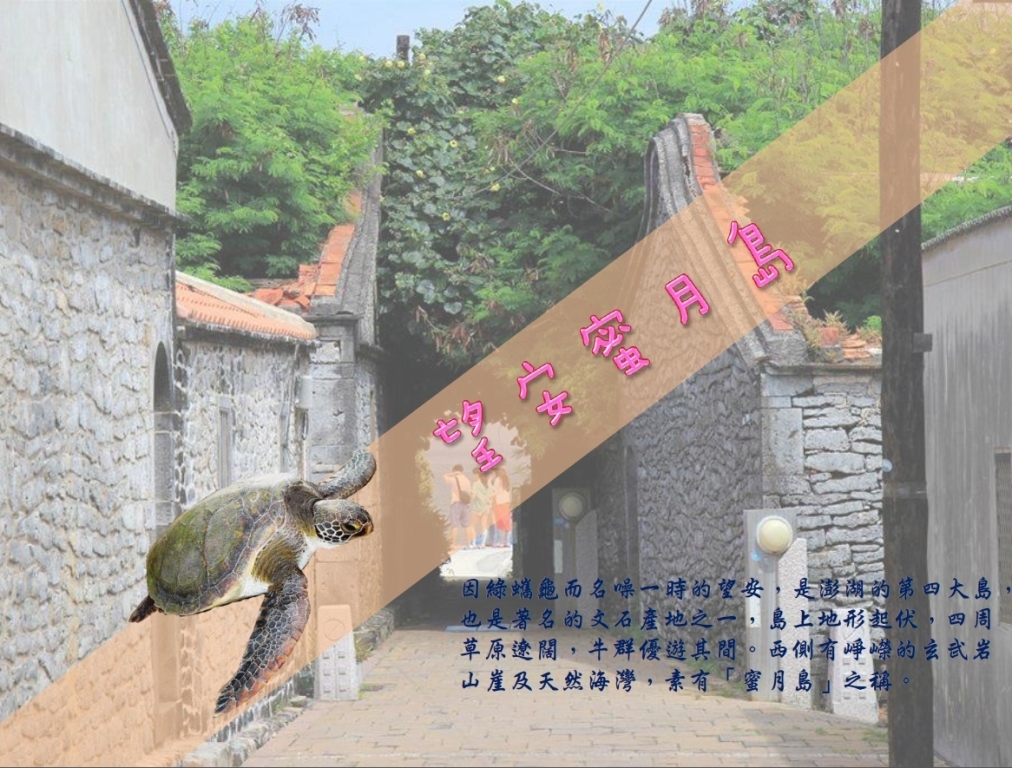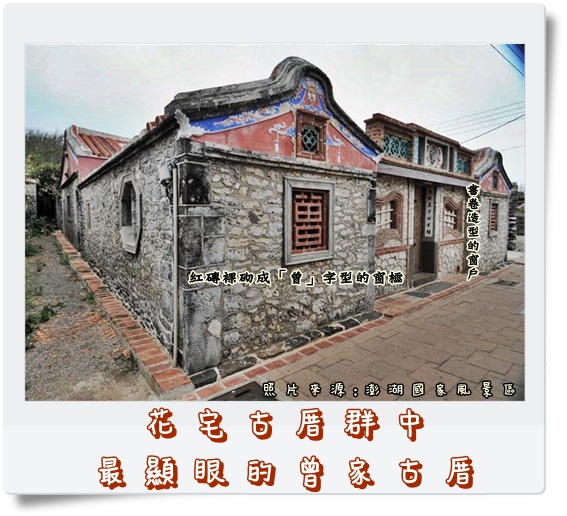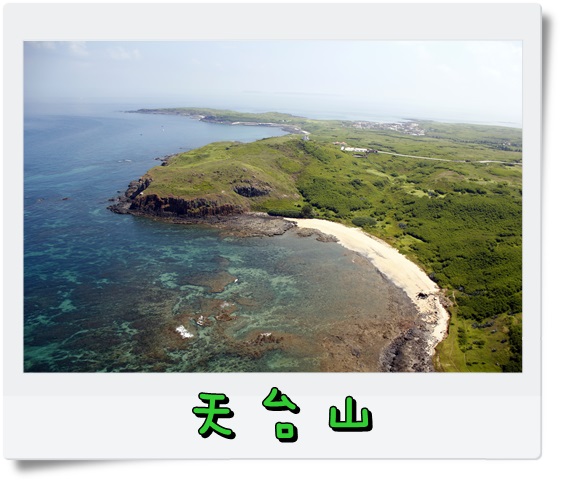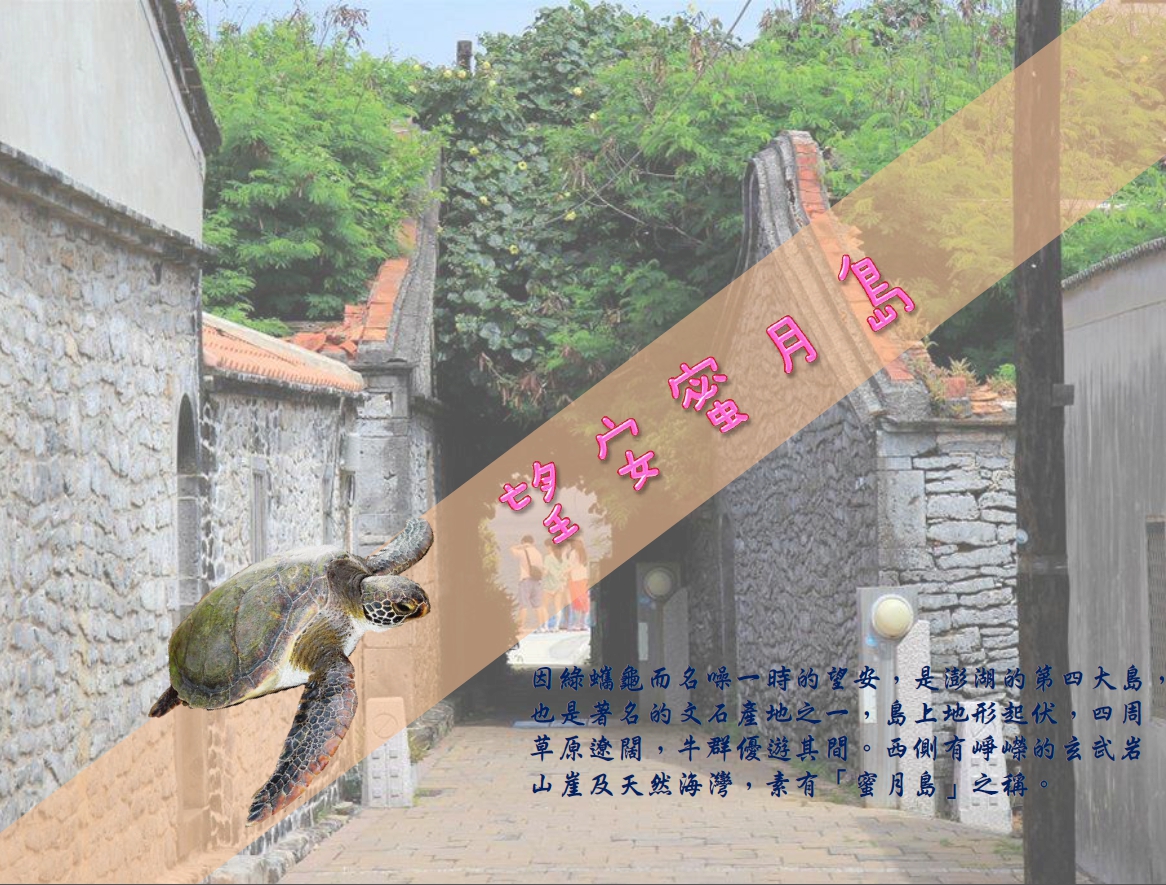
Origin of Place Name
"Wangan Township" was originally called "Wangan (Net Harbour)". The origin of its name is that in the fifteenth year of Yongli, Cheng Cheng-Kung led troops to Taiwan, he passed through Cimeiyu, looked back at Ba-Zhao Island (Wangan Island) and hoped that he could arrive safely. Therefore, it is called Wangan (hope for safety).
Location
It is located in the south of Penghu and composed of 18 islands with an area of about 13.7824 km2 and a population of about 4,500. Among them, there are only Wangan Island, Jiangjunaoyu, Dongjiyu Dongyuping, Siyuping and Huayu are inhabited. The annual rainfall distribution is extremely uneven, mostly concentrated during the lunar year month of April to September, and the annual average rainfall is only about 1000 mm. Therefore, there is often water shortage and drought. Between October to March each year, the northeastern monsoon is very strong, so agricultural, fishery production and transportation are severely affected.
External Access
Ferries Information: South Sea Shipping Transport _ Regular water bus schedule / Shuttle boat timetable
Flight Information: Wangan Airport
Introduction of Dongan Village and Sian Village
Dongan Village: The most important government agencies, military and administrative centers of the township are located here.
Sian Village: It has a reservoir and water desalination plants which were built in 2001 to provide drinking water for residents in this Island.
Origin of Place Name
The two villages were originally the same settlement before the Taiwan Restoration Day. On January 20, 1946, it was divided into Dongwangan (east Wangan) and Siwangan (west Wangan) Villages. Not long after, their names were changed to Dongan and Sian villages.
Location
Dongan Village: It is located in the southeast of Wangan Island. This south is near Wangankou, the west is connected with Sian Village, and the north is to the boundary of north Tanmen Harbor and Zhongshe Village.
Sian Village: It is located in the southwest corner of Wangan Island. The north is connected with Zhongshe Village, east is linked with Dongan Village, and the southeast is a beach.
Economic Activities
The two villages are mostly dry fields, and the harvest of crops depends entirely on the natural rainfall. The main crops are peanut, sweet potato, and sorghum. The harvest can only last for less than three months, so the rest needs to reply on Taiwan main island's supply.
Harbour
Tanmen Harbor is the largest port in the township. Not only fishing vessels stop here, but also the shuttle boats. The current offshore central fishery harbor is also at the northern end of Tanmen Harbor.
Tourist Attractions
Dongan Village:
1. Green Turtle Tourism and Conservation Center :
Standing southeast of Wanganyu, the building shaped like a sea turtle is the “Green Turtle Tourism and Conservation Center”. Upon entering, you can see the natural ecology in Wang an, including migratory birds , protected animals, and of course the most important of all, “green turtles”. The exhibitions there include: turtle species, distributed environment and ecology, and all the exhibitions that are well-worth exploring. 2. Wangankou Beach:
The pure white beach in Wangankou is more than one kilometer long. This place was called Wangankou (fishing net place) because of the beautiful sight of fishermen casting nets, sunning nets on the beaching and women mending nets. Fishing boats no long park in this area. It is now a wading heaven for children and tourists. Sian Village:
Zhanglaiz Beach: Located in the west of the Biwei. It is a 400 meter long arc-shaped beach. Zhanglaizi and Dalaizi on the southwestern side of Wangan are together called Laiwan.
Food
Dongan Village: Hongchung Popcorn Ball
Popcorn Ball was used as wedding gifts in the past.
Jhongshe Village
Formerly known as "Huazhai (Flower House)". Jhongshe Village is an ancient settlement on the south bank of Tiantai Mountain. The eastern part of the village has a small airport for flying to Kaohsiung.
Origin of Place Name
It was originally named “Flower House” because of the legend that when this village was first established, their ancestors looked at the local terrain, and discovered that the mountains surrounding the place are just like lotus petals. So they first reclaimed the land around “the heart of the flower” (Shanzaiweiding) and built a house. Then they named it “Flower House”, also meaning the house that was built at the heart of the flower. In 1971, the late president Chiang Ching-Kuo visited the flower house, and seeing that it sits in the middle of four other villages in Wangan Township, renamed it “Jhongshe” (the village in the middle).
Location
Jhongshe Village is located in the north of Sian Village. The west side is a semi-circle Huazhai Bay overlooking Maoyu, Caoyu, and Huayu through the bay. The south is to Sian and Dongan villages, and the north is Tiantai Mountain.
Harbour
1. Jhongshe Harbour
Small open boats are allowed to park here, and residents can go fishing at the coastal fishing ground. It is also a place where children gather and play. However, the coast of Huazhai Bay is shallow and the sand is coral sand, which means it is not suitable for big boats 2. Pudai Harbor
There are many kinds of fishes. It is also a good place for tourists to swim, snorkel and watch fish in summer. The area's fishery resources are abundant so fishermen love it a lot. Another area is the Land Hermit Crab protected area. Penghu National Scenic Area Administration, Tourism Bureau, MOTC has been developing these areas as recreation spots. After it is done, it will include snorkeling, fishing, watching Land Hermit Crab, barbecue, accommodation and other facilities, which makes it an excellent tourist attraction for tourism and leisure.
Tourist Attractions
Huazhai Ancient Residences
The history can be traced back to more than three hundred years ago. The whole village still maintains the traditional coral stone architecture style. Due to the ongoing outflow of population, most of the houses are vacant and do not need to be rebuilt. So far, the traditional looking of the houses have been preserved; they are very rare but the condition is getting worse because it is lack of maintenance. In 2004, it was ranked among the top 100 most memorable and preserved cultural monuments in the world.
Food
Huazhai Ruyiju Brown Sugar Cake
Religion
Most of the residents believe in Wufu Qiansui. The classic activities are like War-horse Appreciation on the 1st and 15th day of the lunar month, God’s birthday celebration, God’s farewell event on the lunar year date of 15th December, and God’s welcome event on the lunar year date of 1st January.
Shueian Village
The village has lots of nature landscape advantages for tourism development, such as Tiantai fairyland, grassland, beach, bay, cliff cave, Liyu Mountain and Mandarin Ducks Grotto. The local special products and aquatic products are abundant. If the government can fully support the development of tourism, the future prospects are limitless.
Interesting stories of Shueian Village please click here
Origin of Place Name
The name "Shueian" should be related to the past water replenishment of passing boats in spring and summer. The meaning of the word "An" is "the place where the ship parks in the sea". It is generally referred to bay.
Location
It is located on the north side of Wangan Island. The south of the island is close to the boundary of Tiantai Mountain and Jhongshe Village; the eastern island is close to Mandarin Ducks Grotto; on the west, it is able to overlook Huayu Village; the north side is separated from Hujingyu by the sea. The West Port is the only shortcut to Magong.
Economic Activities
The villagers are diligent and simple, with rural characteristics. The village has mostly dry fields, and the harvest of crops depends entirely on the natural rainfall. The main crops are peanut, sweet potato, and sorghum. The harvest can only last for less than three months, so the rest needs to reply on Taiwan main island's supply.
Tourist Attractions
1. Tiantai Mountain
The Wang-an Tiantaishan area is famous for production of wenshi (veined stones). Serene beauty emerges from a large canvass of picturesque grassland with cows and goats strolling about leisurely. Tiantai Hill is 53 meters above sea level, the highest on Wangan Island. Tiantaishan is the best location to view the full Wang-an Island and Huayu across the sea. The cliff at west side features majestic basalt formation. The trail leads to a 30-meter-high sea cave can be found at the west coast, featuring unique micro-gabbro patterns very different from the basalt pillar formation on Hujing and Tongpan Islands. 2. Mandarin Ducks Grotto
Mandarin Ducks Grotto is a valley which runs east and west. The valley and Maanshan, a saddle-like hill, face each other across the sea. Because of the terrain, the grotto was made a hidden place. During the Japanese Occupation, it became a secret naval base of suicide boats. The area has smooth current and clean water, which is a good place for swimming. Therefore, the government has built pavilions, public toilets and planned camping areas. Visitors can enjoy leisure activities such as swimming, barbecue and camping. Besides, the white sand beach here is the good place to watch the starry night.
Harbour
Shueian Beigang (North Harbour)
Religion
Residents here mainly believe in Lifu Wangye.
